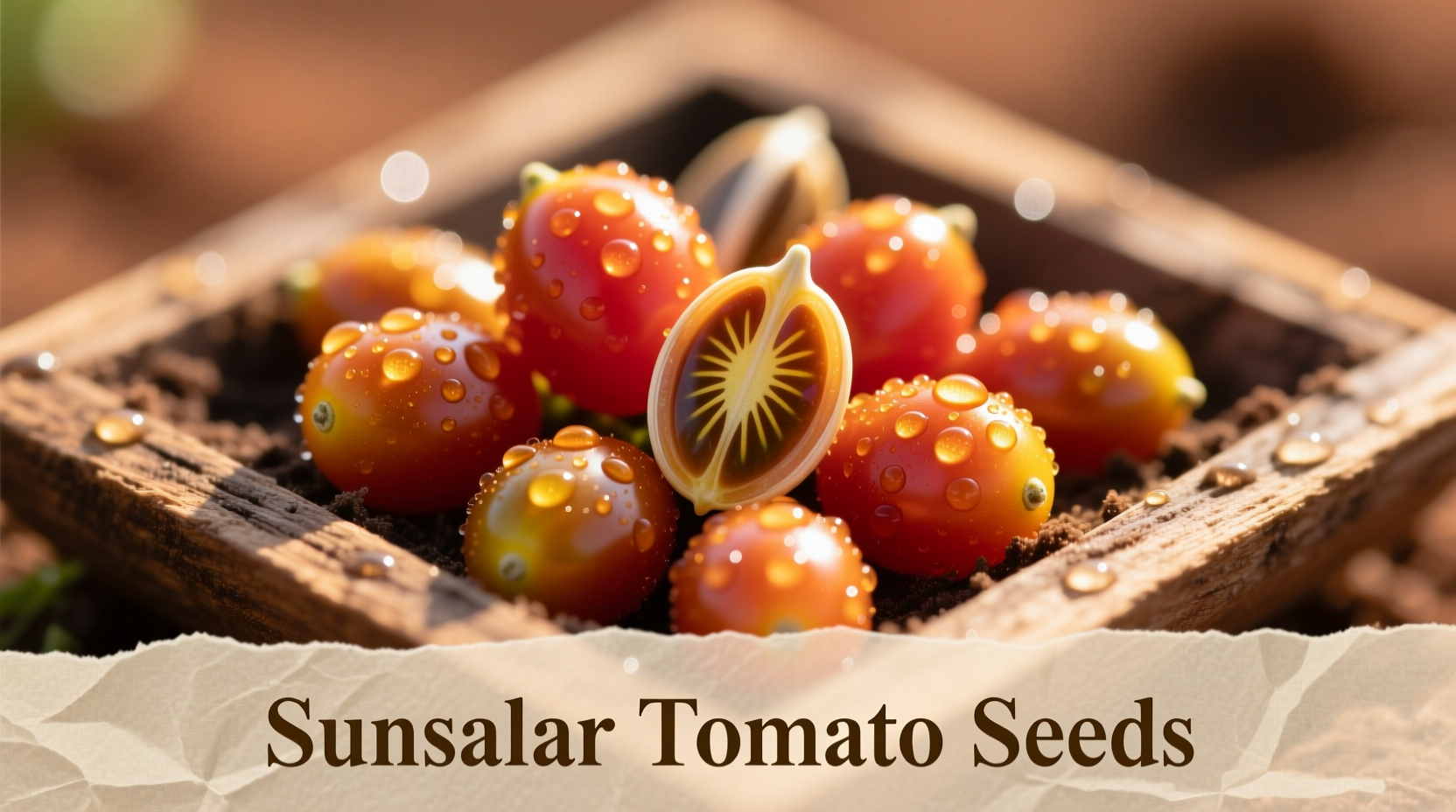Discover why SunSugar tomatoes have become the go-to cherry variety for home gardeners seeking reliable sweetness and robust growth. This comprehensive guide delivers everything you need to successfully grow these golden gems, whether you're a first-time gardener or expanding your vegetable patch.
Why Gardeners Choose SunSugar Tomato Seeds
When you select SunSugar tomato seeds, you're choosing a variety that consistently ranks among the sweetest cherry tomatoes available. Developed through careful breeding, these orange-gold fruits deliver a Brix rating (sugar measurement) of 9-10, significantly higher than most cherry tomato varieties. The plants produce heavy yields of 1-2 inch fruits that resist cracking even during inconsistent watering patterns—a common frustration with other cherry varieties.
Unlike many hybrid tomatoes that sacrifice flavor for disease resistance, SunSugar maintains exceptional taste while offering protection against common tomato ailments. This balance makes them particularly valuable for gardeners in humid climates where fungal diseases typically devastate tomato crops.
Key Characteristics Compared
| Variety | Sweetness (Brix) | Disease Resistance | Days to Maturity | Fruit Cracking |
|---|---|---|---|---|
| SunSugar | 9-10 | Fusarium wilt, Verticillium wilt, Tomato spotted wilt virus | 65-70 | Low |
| Super Sweet 100 | 8-9 | Fusarium wilt, Verticillium wilt | 60-65 | Moderate |
| Sweet Million | 8 | Fusarium wilt, Verticillium wilt, Tomato spotted wilt virus | 65 | High |
This comparison shows SunSugar's advantage in both sweetness and crack resistance while maintaining strong disease protection. According to research from the University of Minnesota Extension, crack-resistant varieties like SunSugar perform significantly better during summer rainfall fluctuations that cause rapid fruit expansion.
Optimal Planting Conditions
SunSugar tomatoes thrive when planted after your last frost date when soil temperatures reach at least 60°F (15°C). These determinate plants reach 4-6 feet in height and require sturdy support. Unlike many cherry tomatoes that demand constant attention, SunSugar's strong stems and disease resistance make them more forgiving for beginners.
For best results:
- Start seeds indoors 6-8 weeks before last frost
- Transplant outdoors when nighttime temperatures consistently stay above 50°F
- Space plants 24-36 inches apart in rows 4 feet apart
- Plant in locations receiving 6-8 hours of direct sunlight daily

Seasonal Growing Timeline
Understanding the development stages helps optimize your care routine:
- Weeks 1-2: Seed germination (7-14 days at 70-80°F soil temperature)
- Weeks 3-6: Seedling development (transplant to larger containers as needed)
- Weeks 7-8: Hardening off before outdoor planting
- Weeks 9-12: Establishment in garden (first flowers appear)
- Weeks 13-16: Fruit set and development
- Weeks 17-18: First harvest (65-70 days from transplant)
This timeline reflects data from the University of Wisconsin Horticulture Department, which notes that consistent temperature and moisture during flowering significantly impacts fruit set in cherry tomatoes.
Context-Specific Performance
SunSugar performs exceptionally well in these conditions:
- Humid climates where fungal diseases typically affect tomatoes
- Container gardens (minimum 5-gallon containers)
- Regions with moderate summer temperatures (70-85°F)
Consider alternative varieties if you garden in:
- Extremely hot climates (consistently above 90°F)
- Short-season areas with less than 70 frost-free days
- Regions with severe tobacco mosaic virus outbreaks
Essential Care Practices
While SunSugar requires less maintenance than many tomato varieties, these practices maximize your harvest:
Watering Strategy
Maintain consistent moisture—about 1-2 inches per week. Use drip irrigation or water at soil level to prevent fungal diseases. Mulch with straw or wood chips to maintain even soil moisture, which prevents blossom end rot and fruit cracking.
Fertilization Approach
Apply balanced fertilizer (10-10-10) at planting, then switch to low-nitrogen, high-phosphorus formula when flowers appear. Over-fertilizing with nitrogen promotes leafy growth at the expense of fruit production—a common mistake noted in Oregon State University Extension gardening surveys.
Pest Management
Monitor for common tomato pests:
- Aphids: Spray with strong water stream or insecticidal soap
- Hornworms: Hand-pick or use BT spray
- Whiteflies: Yellow sticky traps work effectively
Harvesting and Enjoying Your Crop
Pick SunSugar tomatoes when they develop their characteristic golden-orange color and slightly soften to touch. Unlike red tomatoes that continue ripening off the vine, SunSugar achieves peak sweetness when harvested fully ripe.
For best flavor and storage:
- Harvest in morning when sugars are highest
- Store at room temperature away from direct sunlight
- Refrigerate only if necessary (chilling diminishes flavor)
- Enjoy within 3-5 days for peak sweetness
Chef Emma Rodriguez notes: "SunSugar tomatoes shine in fresh applications where their sweetness can be appreciated—salads, bruschetta, or simply eaten as a snack. Their thin skin and minimal seeds make them perfect for quick preparations without extensive prep work." These tomatoes also dehydrate beautifully for longer preservation.











 浙公网安备
33010002000092号
浙公网安备
33010002000092号 浙B2-20120091-4
浙B2-20120091-4